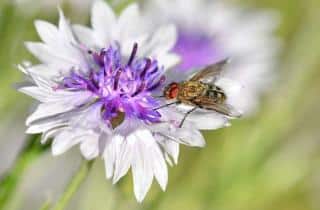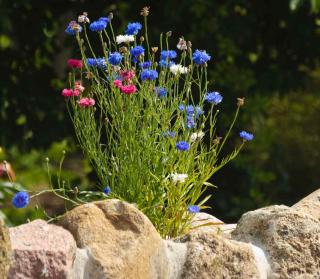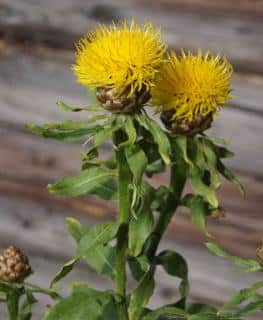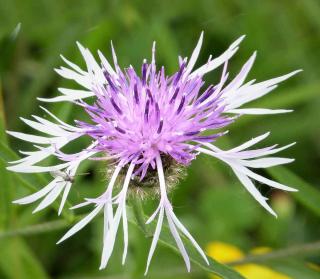

Centaury (or Centaurea) is a knee-height clump of wispy leaves that is dotted with beautiful flowers. It grow well in hard-to-grow places.
Centaury key facts
Botanical name – Centaurea sp.
Common name – Centaury
Family – Asteraceae
Type – perennial
Bearing – clump
Height – 8 to 40 inches (20 to 120 cm)
Planting density – 3 to 8 plants per sq. yard (m²) depending on the species
Exposure – full sun
Soil – any type, as long as well drained
Flowering – From May to September depending on the species
Centaury is a type of perennial that includes plants that are very different. It doesn’t fear drought, nor does it particularly hate chalky soil. Centaury is excellent to bring blooms to hard-to-flower soil types.
Centaury loves full sun and doesn’t complain much about the type of soil, as long as it drains well.
The larger the plant variety when mature, the farther apart they must be planted. When these rules are followed, there won’t be any planting trouble at all for Centaurea.
This is very simple: the only care it needs is deadheading to trigger new blooming. At the beginning of spring, cut the clump back to remove dead foliage and any portions that might have been damaged by frost.
Two options are most effective to multiply centaury: dividing the clump or collecting and sowing seeds.
To divide your centaury, pull it out with a spade and then chop the root ball in half. After that, plant each of the portions as if it were a new plant.
Centaureais a perennial that self-sows abundantly. If you aim to propagate it, you can simple unearth natural seedlings and transplant them elsewhere.

Centaury will love growing in flower beds, pots, rocky terrain and edges. The best species to pair it with depends on what role it plays in the landscaping.


Its cute purple flowers with a white center, and pubescent gray colors make it one of the most beautiful species of centaury.

Also exists in a pure-white blooming cultivar called ‘Alba’.